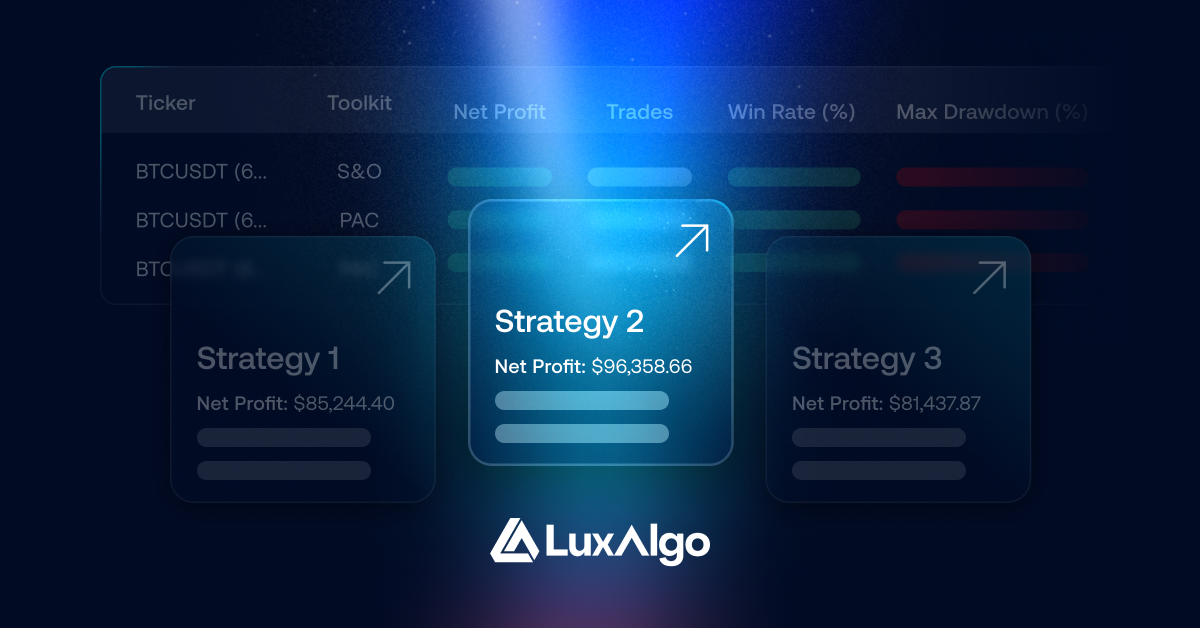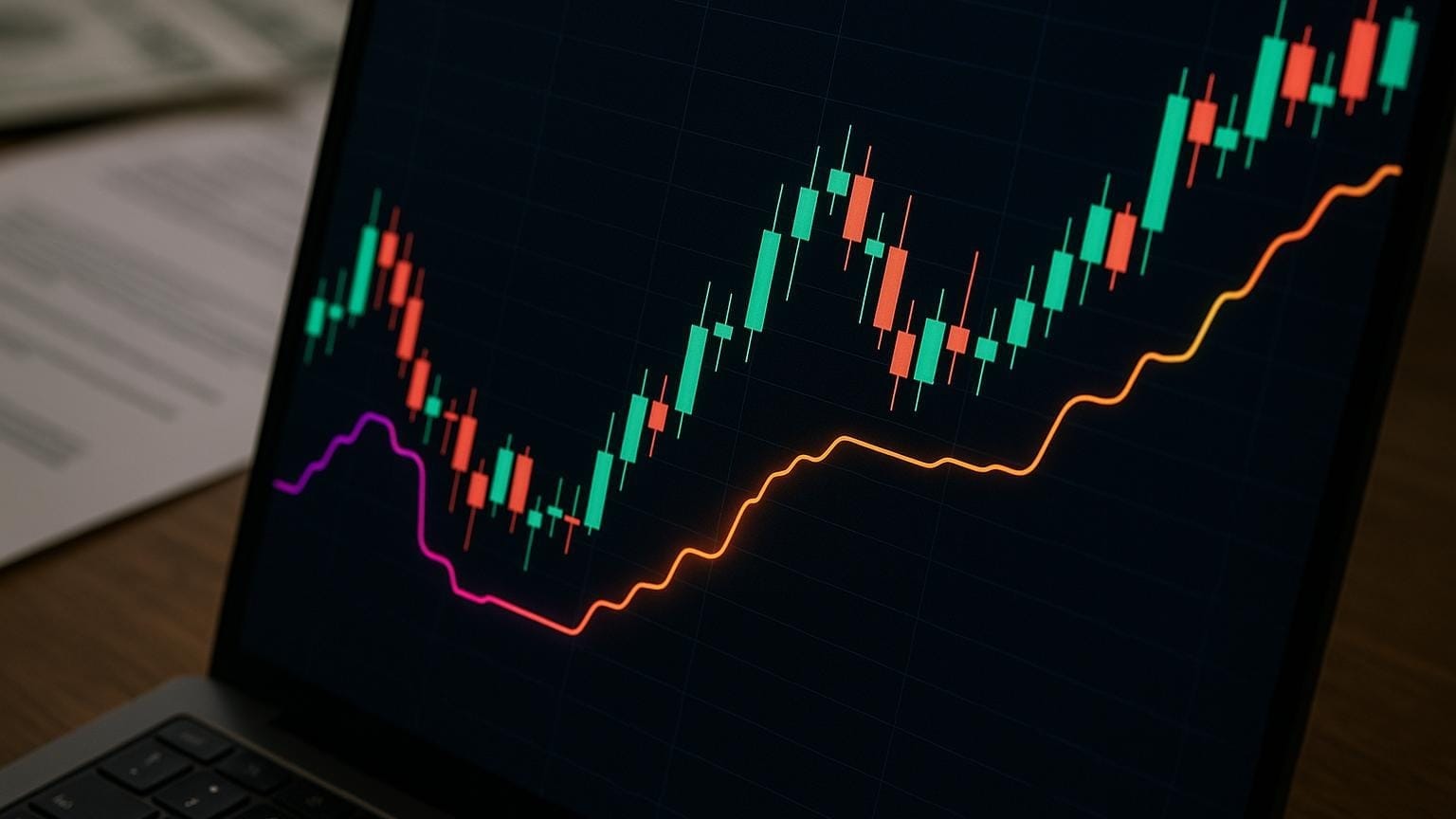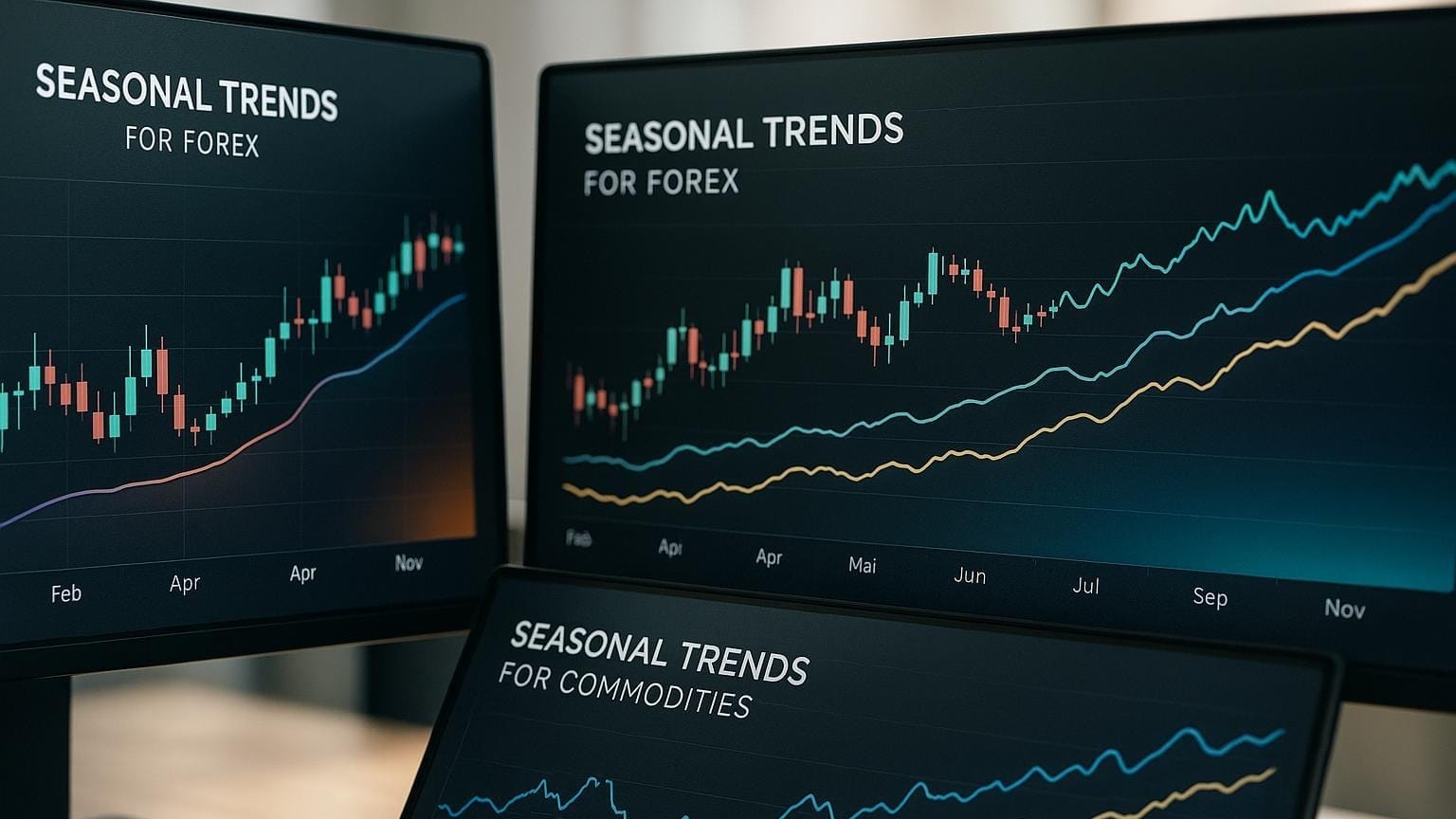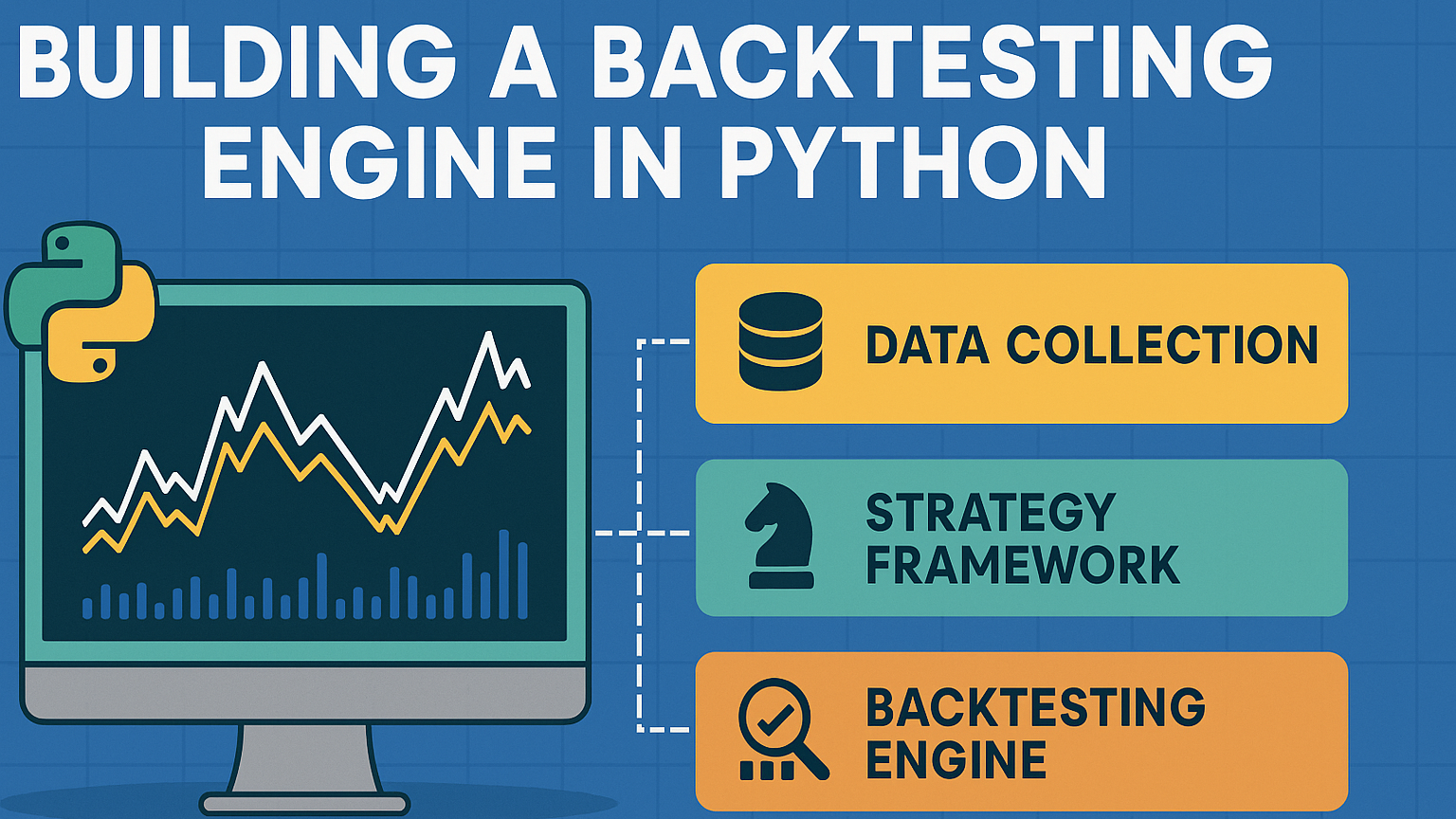Learn how the Arnaud Legoux Moving Average (ALMA) offers smoother trend analysis, reducing noise and lag for more effective trading strategies.
The Arnaud Legoux Moving Average (ALMA) is a refined moving average designed to balance smoothness and responsiveness in trend analysis. Unlike traditional methods, ALMA uses a Gaussian weighting system to filter out noise while reacting quickly to price changes. Its customizable parameters – length, offset, and sigma – allow traders to adjust the indicator for different markets and timeframes. Developed in 2009 by Arnaud Legoux and Dimitris Kouzis-Loukas, ALMA aims to deliver a smoother curve with less lag than older moving averages.
Key Takeaways:
- Gaussian Weighting: ALMA applies a bell-curve weight to price data, prioritizing recent values while minimizing outliers.
- Customizable Parameters:
- Length: Number of data points used in the calculation.
- Offset: Adjusts focus toward recent or older data.
- Sigma: Controls smoothness and sensitivity.
- Applications: Works well across markets like equities, forex, and cryptocurrency for trend detection, support/resistance analysis, and generating buy/sell signals.
- Advantages Over SMAs/EMAs: Reduces lag and noise, providing clearer and faster trend signals.
ALMA is particularly effective in volatile markets like cryptocurrency or during events with high market activity, such as economic announcements where market volatility can spike quickly. By combining ALMA with what LuxAlgo provides on TradingView and through its AI Backtesting Assistant, traders can fine-tune strategies, set alerts, and analyze trends more efficiently.
Quick Overview of ALMA's Features:
| Feature | ALMA | SMA | EMA |
|---|---|---|---|
| Weighting System | Gaussian Curve | Equal Weights | Exponential Decay |
| Responsiveness | High | Low | Medium-High |
| Noise Reduction | High | Low | Medium |
| Customization Options | Length, Offset, Sigma | Length | Length |
ALMA offers a modern solution for traders seeking a balance between smooth trends and quick reactions, making it a versatile tool for various trading strategies.
ALMA Indicator Spotlight: Arnaud Legoux Moving Average
How ALMA Works: Core Methodology and Settings
At the heart of ALMA's functionality lies a solid mathematical approach that combines the benefits of traditional moving averages while addressing their shortcomings. By applying a Gaussian model to weight price data, ALMA creates a bell-shaped curve that determines how much influence each price point has on the final calculation. This dynamic Gaussian weighting system sets ALMA apart from standard moving averages like SMAs and EMAs, offering traders a more precise way to analyze market trends. The flexibility of this system allows traders to adjust the indicator to suit various market conditions and trading goals. In practice, ALMA is often used to smooth price data while staying close to current price action, helping traders avoid whipsaws that can occur with faster but noisier moving averages.
What makes ALMA even more effective is its use of statistical principles from signal processing. This design helps ALMA filter out market noise while retaining critical trend information, making it easier to identify genuine price movements in the midst of fluctuations. By focusing more weight toward the middle of the window and biasing the curve toward recent prices, ALMA captures the underlying direction of the market without overreacting to every single tick.
ALMA's 3 Main Parameters
To fine-tune ALMA's performance, traders can adjust three key parameters:
- Length (Period): Determines how many data points are included in the calculation, with effects on trend analysis explored further in trading strategies. Longer lengths smooth the line but respond more slowly, while shorter lengths track price action more tightly.
- Sigma: Controls the width of the Gaussian curve, balancing how responsive or smooth the indicator is. Smaller sigma values concentrate weight into a narrower band of prices, while larger sigma values distribute weight more evenly across the window.
- Offset: Shifts the Gaussian curve to prioritize either recent or older data in the calculation. Offsets closer to 1 bias the line toward recent prices, while lower offsets create a more centered average.
Gaussian Weighting System
One of ALMA's standout features is its Gaussian weighting system. Unlike other moving averages that use uniform or exponentially declining weights, ALMA applies a bell-shaped distribution of weights across the selected period. This approach ensures that different price points contribute to the calculation in a way that reflects their importance. For example, shifting the peak of the bell curve toward recent prices highlights the latest market activity, while the sigma parameter controls how concentrated or spread out the weights are. This design also minimizes the impact of outliers, ensuring they don't distort the overall trend analysis. According to platform documentation and independent research, this Gaussian weighting is a key reason ALMA can stay smooth yet react promptly when a genuine trend accelerates.[1]
How Parameter Changes Affect ALMA Performance
Adjusting ALMA's parameters can significantly influence how it behaves, which directly impacts trading decisions. For instance:
- Increasing the period smooths out price fluctuations, but it may delay the indicator's ability to confirm new trends.
- Reducing sigma makes ALMA more sensitive to recent price changes, potentially identifying trends earlier.
- Adjusting the offset allows traders to fine-tune the balance between focusing on recent or older data, altering the indicator's responsiveness and smoothness.
Choosing the right settings for ALMA depends on your trading timeframe and the volatility of the asset you're analyzing. Many traders start with default settings and then adapt length, sigma, and offset based on whether they are scalping, day trading, or swing trading. Experimenting with different configurations on historical data, or through structured backtests, can help you find the ideal balance for your strategy.[2]
ALMA vs. Simple and Exponential Moving Averages
The Arnaud Legoux Moving Average (ALMA) was created to overcome the limitations of traditional moving averages like the Simple Moving Average (SMA) and the Exponential Moving Average (EMA).[1][3] Its design aims to strike a balance between responsiveness to market changes and smoothness in trend analysis.
To see how ALMA compares, let’s look at how traditional moving averages handle fast-changing market conditions. The Simple Moving Average gives equal weight to all prices over a set period. While this simplicity is useful, it often lags behind rapid price movements, making it slow to adapt.[1] On the other hand, the Exponential Moving Average prioritizes recent prices, which makes it react faster. However, this sensitivity can sometimes amplify market noise, leading to false signals.[2]
ALMA addresses these issues by combining the best of both approaches. It reduces lag while maintaining a smooth representation of market trends, making it a valuable tool for traders. When applied thoughtfully, ALMA can help filter out many of the whipsaws that plague traditional crossover strategies while still signaling genuine trend shifts in a timely manner.[3]
Using ALMA in Real Trading Strategies
Applying ALMA (Arnaud Legoux Moving Average) in real trading can provide valuable insights. Its ability to reduce lag while keeping price movement smooth makes it a great tool for identifying trends, analyzing support and resistance levels, and generating trading signals.
ALMA for Trend Direction and Reversals
One of the simplest ways to use ALMA is to determine the direction of a trend. When the price stays above the ALMA line, it indicates an uptrend, while prices below the line signal a downtrend. This becomes even more effective when looking for trend reversals.
A trend reversal is often marked by a strong price move crossing the ALMA line. Unlike traditional moving averages that can be thrown off by market noise, ALMA's Gaussian weighting system helps filter out minor price fluctuations. As a result, when the price crosses the ALMA line, it’s more likely to reflect a meaningful change in market sentiment.
The angle of the ALMA line also offers valuable clues. A steep upward slope suggests strong bullish momentum, while a sharp downward slope points to bearish pressure. If the ALMA line begins to flatten, it may indicate that the current trend is weakening and a reversal could be near.
For the most reliable reversal signals, look for a combination of two events: the price crossing the ALMA line and the ALMA line itself changing direction. This dual confirmation improves the accuracy of identifying shifts in trends.
Beyond trend detection, ALMA also serves as a dynamic indicator for support and resistance levels.
ALMA as Dynamic Support and Resistance
ALMA adapts dynamically to act as a support level during uptrends and as resistance during downtrends. In an uptrend, prices often bounce off the ALMA line, treating it as a moving support level. Conversely, in a downtrend, the ALMA line typically acts as resistance, where rallies tend to lose steam.
The effectiveness of ALMA as support or resistance depends on the timeframe you're using. On daily charts, ALMA can provide stronger support and resistance levels, making it ideal for swing trading. On hourly charts, it works well for day traders, offering shorter-term levels.
In an uptrend, when the price approaches ALMA from above, it can present buying opportunities near the line. Look for signs that the ALMA line is holding as support – such as bullish candlestick patterns or rising buying volume. However, if the price breaks below the ALMA line with significant selling pressure, it may signal that the support has failed and the trend is reversing.
In a downtrend, ALMA acts as overhead resistance. Short-term rallies often stall near the ALMA line, presenting potential selling opportunities. A breakout above the ALMA line, especially with strong volume and momentum, can indicate a potential reversal of the downtrend.
These dynamic support and resistance levels provide a foundation for creating precise entry and exit signals.
Creating Buy and Sell Signals with ALMA
By combining ALMA's trend analysis and dynamic levels, traders can generate clear buy and sell signals. A price crossover above the ALMA line suggests a buy signal, while a cross below it points to a sell signal.
However, relying solely on crossovers can lead to mixed results. The most reliable buy signals occur when the price crosses above a rising ALMA line, indicating both immediate momentum and a strong underlying trend. Similarly, the strongest sell signals happen when the price crosses below a falling ALMA line.
Volume plays a crucial role in validating these signals. A crossover accompanied by high volume shows strong market interest and is more likely to be genuine. In contrast, low-volume crossovers are more prone to being false signals.
The market environment also matters. ALMA crossovers tend to perform well in trending markets but can produce more false signals in sideways or choppy conditions. In such cases, wait for additional confirmation before acting on a crossover.
For exit strategies, you can use ALMA in reverse. For instance, if you entered a trade when the price crossed above the ALMA line, consider exiting when the price crosses back below it. This approach allows you to capture most of the trend while minimizing losses during reversals.
Finally, the settings you choose for ALMA can significantly impact its effectiveness. Lower offset values make ALMA more responsive, generating more signals but with a higher risk of false positives. Higher offset values produce fewer signals but may be more reliable. Experiment with different settings to find the balance that suits your trading style and the markets you trade.[4]
Using ALMA with LuxAlgo Tools and Platform

LuxAlgo takes ALMA's trend analysis capabilities and provides traders with the tools to apply them effectively in real time. By combining ALMA with exclusive tools on TradingView, the AI Backtesting Assistant, and a supportive trading community, LuxAlgo helps traders turn ALMA from a single indicator into a complete, rules-based trading approach.
LuxAlgo Pricing and Plans
LuxAlgo offers several plans so traders can match features to their workflow:
- Free Plan ($0, lifetime access): Includes access to the Library – a free collection of indicators and utilities across multiple platforms, ideal for exploring ALMA-based ideas without commitment.
- Premium ($39.99/month): Adds advanced signals, overlays, and oscillator tools on TradingView, making it easier to combine ALMA with high-quality confirmation signals and alerts.
- Ultimate ($59.99/month): Includes everything in Premium plus access to LuxAlgo’s AI Backtesting platform, so you can formally test ALMA strategies before committing real capital.
Setting Up ALMA in the LuxAlgo Library
The LuxAlgo Library makes it easy to access ALMA on popular charting platforms, offering a wide range of indicators. The Library refers to the free collection of indicators available when you create a free LuxAlgo account, and its user-friendly interface allows traders to fine-tune ALMA's three key parameters – period, offset, and sigma – to align with different market conditions and trading timeframes.
LuxAlgo’s TradingView toolkits simplify the process even further:
- The Signals & Overlays (S&O) Toolkit integrates ALMA with signal algorithms and overlay visuals for clarity.
- The Price Action Concepts (PAC) Toolkit adds automated pattern detection and volumetric context, offering additional layers of confirmation.
- The Oscillator Matrix (OSC) Toolkit pairs ALMA with tools like real-time divergence detection and money flow data to pinpoint momentum shifts.
Each toolkit includes flexible alert features, so traders can set up ALMA-based alerts that work seamlessly across all timeframes. Adjusting ALMA parameters is straightforward using the LuxAlgo Library, ensuring traders can quickly adapt to market changes without rewriting scripts or manually recreating setups.
Building Better ALMA Strategies with LuxAlgo Features
LuxAlgo’s AI Backtesting Assistant is a powerful way to refine ALMA strategies. The platform at luxalgo.com/backtesting evaluates performance across multiple assets and timeframes at once, delivering detailed metrics like win rate, drawdown, profit factor, and frequency of trades. For traders on the Ultimate plan, advanced optimization tools allow for testing ALMA strategies against historical data, ensuring they’re fine-tuned for real-world conditions. Additionally, integrated Screener tools for PAC, S&O, and OSC help identify ALMA-based setups across numerous assets without the need for manual chart reviews.
Weekly scanners, bots, and pre-tested strategies save time by offering ready-to-use ALMA configurations. LuxAlgo’s backtesters on TradingView – including the PAC Backtester, S&O Backtester, and OSC Backtester – let traders test entry and exit rules directly on charts, complete with performance breakdowns. This makes it easier to compare ALMA against other moving averages or trend tools on the same asset.
LuxAlgo Community and Real-Time Analysis Support
LuxAlgo’s global trading community is a hub for collaboration and learning. The user strategy forum is a space where traders share ALMA configurations, discuss parameter tweaks, and brainstorm strategy improvements.
Community members also post real-time analyses, offering valuable insights into how ALMA performs under different market conditions. These shared observations help traders decide when to act on ALMA signals or seek further confirmation.
Around-the-clock live support ensures help is always available, whether it’s for troubleshooting ALMA settings or optimizing a strategy. Regular platform updates keep ALMA tools cutting-edge, staying ahead of market trends.
Real-time analysis tools within LuxAlgo provide instant feedback on ALMA’s performance across various timeframes. This allows traders to compare signals and make informed decisions. For Ultimate plan subscribers, priority support offers tailored advice on fine-tuning ALMA strategies for specific trading styles, turning ALMA into a sophisticated trend analysis powerhouse rather than just another moving average tool.
Summary and Key Points
ALMA addresses the common shortcomings of traditional moving averages. By using Gaussian weighting, it minimizes noise and lag, making it easier to identify genuine market trends.
Why ALMA Stands Out for Trend Analysis
What makes ALMA different is its use of a Gaussian distribution function. This approach prioritizes recent prices while filtering out unnecessary market noise. As a result, it significantly reduces lag and provides smoother price data.[2][3][4] Unlike simple or exponential moving averages, ALMA focuses on the most relevant and current market information. Its flexibility comes from three adjustable parameters – period, offset, and sigma – which allow it to adapt quickly to price changes while avoiding false signals, even in volatile or uncertain market conditions.[1]
To enhance ALMA’s benefits, LuxAlgo adds an extra layer of functionality through its advanced tools and features.
Maximizing ALMA with LuxAlgo
LuxAlgo integrates ALMA into a broader trend analysis framework, making it even more effective. Its specialized toolkits combine ALMA with additional insights to confirm trading signals with precision. The AI Backtesting Assistant evaluates ALMA’s performance across different assets and timeframes, while optimization tools allow Ultimate subscribers to fine-tune the indicator for specific market scenarios.
LuxAlgo also connects traders through a global community that fosters strategy sharing and real-time collaboration. With features like flexible alert creation, integrated screeners, 24/7 live support, and regular updates, LuxAlgo ensures traders can fully leverage ALMA while staying adaptable to changing market conditions for better trading results.
FAQs
How do I adjust ALMA settings to match different market conditions and trading strategies?
To fine-tune the Arnaud Legoux Moving Average (ALMA) for various market conditions, you’ll want to adjust its three main parameters: window size, offset, and sigma. Each plays a unique role in shaping how the moving average responds to price changes.
- Window size determines how much historical data is factored into the calculation. A smaller window reacts quickly to price shifts, making it a better fit for volatile markets. In contrast, a larger window filters out short-term noise, providing a smoother view of long-term trends.
- Offset modifies the placement of the moving average on the time axis. By increasing the offset, you can reduce lag and potentially spot trends earlier – especially useful in trending markets.
- Sigma influences the weight distribution across the data points. Raising the sigma value makes the ALMA more responsive to sudden price changes, which can be advantageous in fast-paced markets.
Adjusting these settings allows you to balance responsiveness and stability, ensuring the ALMA aligns with your trading style and market dynamics.
What makes the Arnaud Legoux Moving Average (ALMA) better than traditional moving averages like SMA or EMA?
The Arnaud Legoux Moving Average (ALMA) is known for delivering smoother trend lines while cutting down on lag. What sets ALMA apart from traditional moving averages is its distinctive weighting and filtering method, which adjusts more efficiently to price fluctuations. This allows it to react swiftly to market changes without adding extra noise to the data.
By striking a balance between quick responsiveness and smoothness, ALMA enables traders to spot trends with greater precision. This makes it an effective tool for refining trading strategies and enhancing decision-making.
How does the Gaussian weighting in the ALMA indicator reduce market noise and highlight real trends?
The Arnaud Legoux Moving Average (ALMA) uses a Gaussian weighting system to cut through market noise by giving more weight to recent price data. At the same time, it smooths out short-term fluctuations, which helps traders focus on real trends instead of random price movements.
With its Gaussian filter, ALMA achieves a balance between being responsive to price changes and maintaining a smooth curve. This reduces false signals and enhances the precision of trend analysis, making it a reliable tool for traders looking to confidently identify trend reversals.
References
LuxAlgo Resources
- Arnaud Legoux Moving Average (ALMA) – LuxAlgo Library
- Buy/Sell Calendar – LuxAlgo Library
- Oscillator Matrix – Reversal Signals Documentation
- The Best Timeframe for Trading – LuxAlgo Blog
- Support and Resistance Levels with Breaks – LuxAlgo Library
- Battle Signals – LuxAlgo Library
- Market Sentiment Technicals – LuxAlgo Library
- Reversal Candlestick Structure – LuxAlgo Library
- Volume Forecasting – LuxAlgo Library
- Dynamic Support & Resistance – LuxAlgo Library
- Trending Market Toolkit – LuxAlgo Library
- LuxAlgo Home Page
- LuxAlgo Toolkits on TradingView
- Pattern Detector – LuxAlgo Library
- LuxAlgo AI Backtesting Assistant








